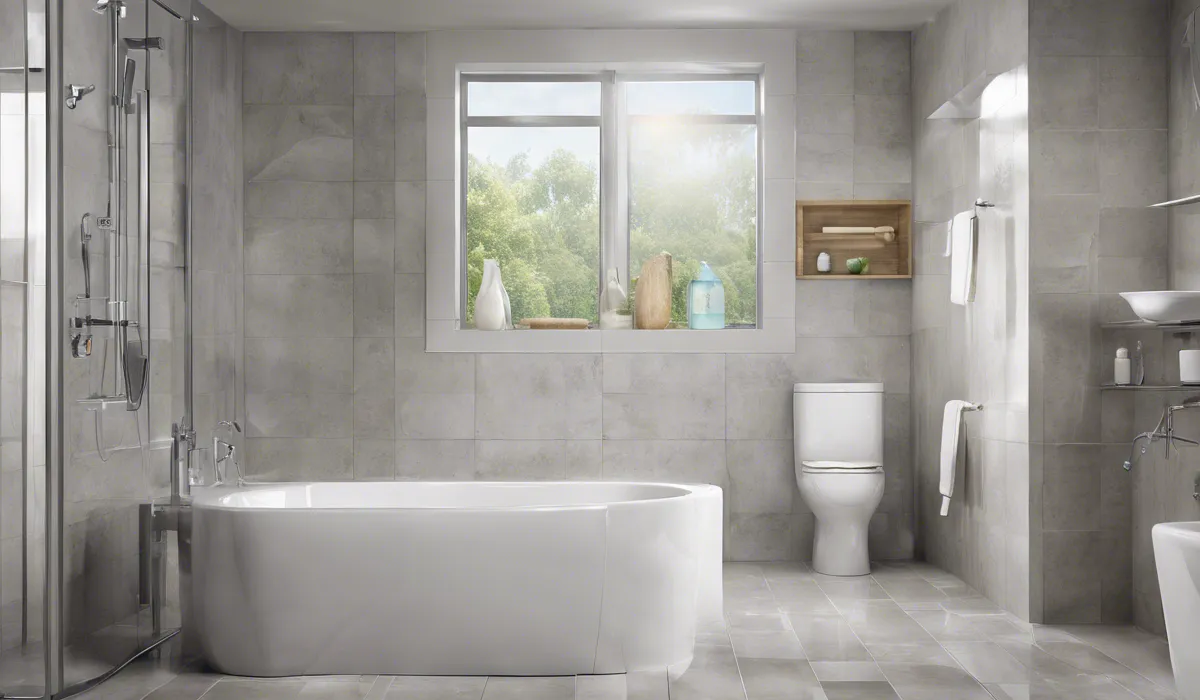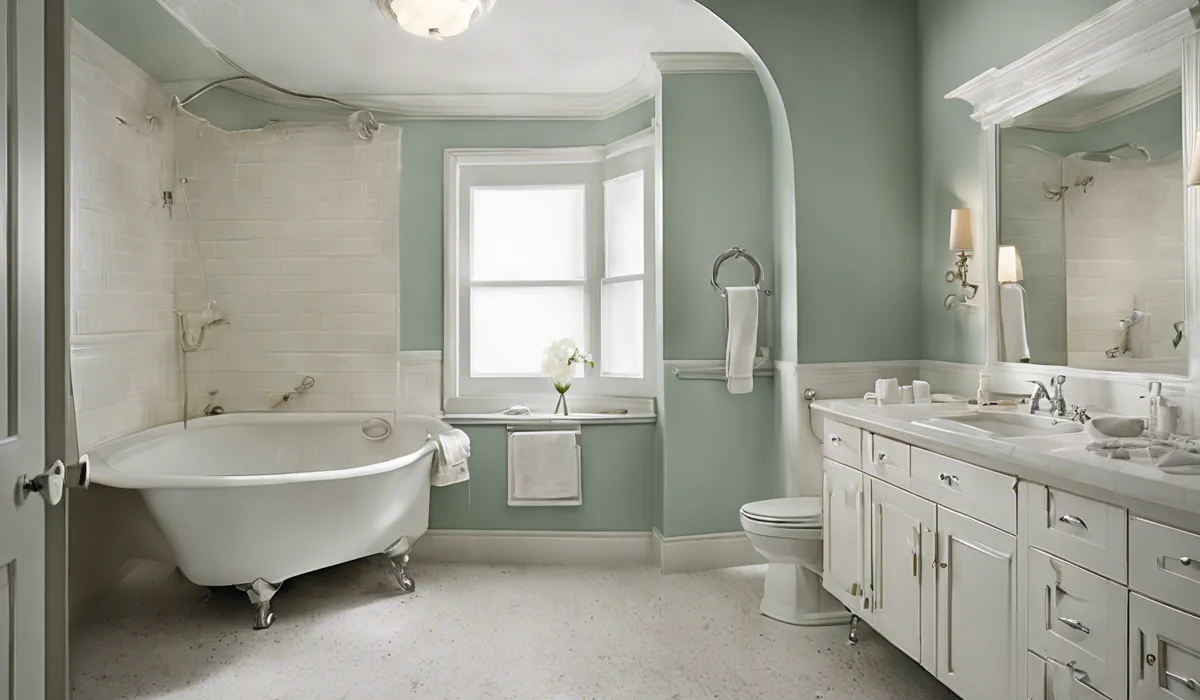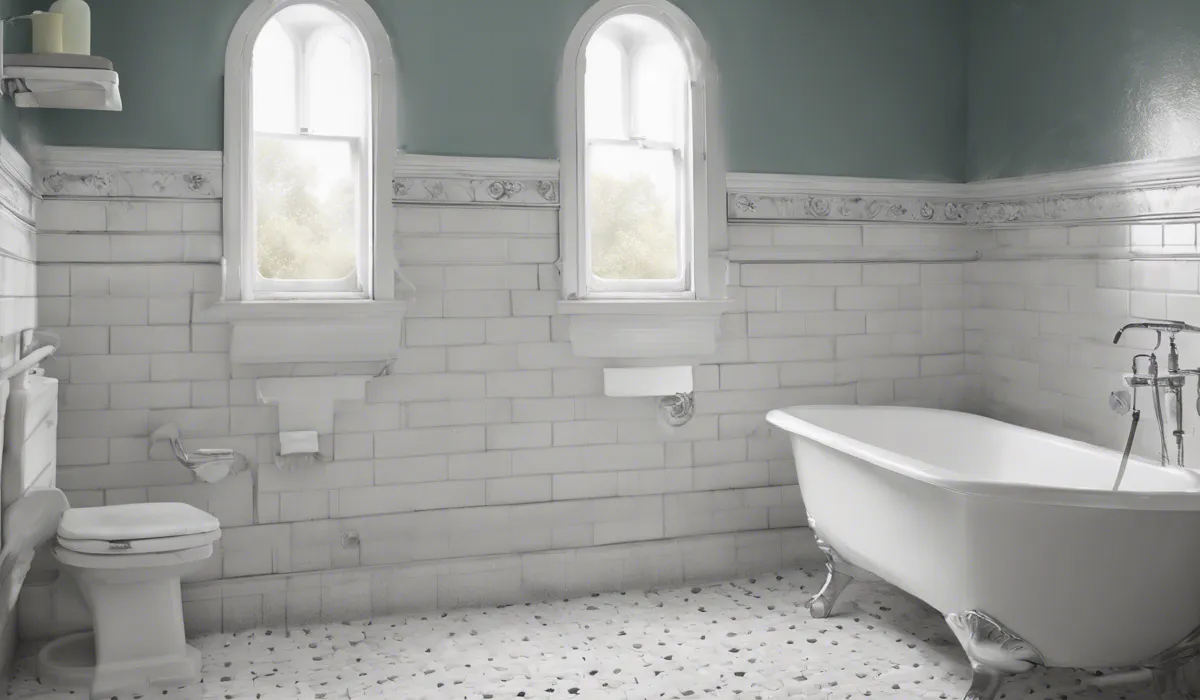To clean mildew in your bathroom, mix equal parts white vinegar and water in a spray bottle. Apply directly to the affected areas, let it sit for 30 minutes, then scrub with a brush and rinse. For tougher mildew, use a mixture of baking soda and hydrogen peroxide.
Understanding Mildew in Your Bathroom

Definition of Mildew
Mildew is a type of fungus that thrives in warm, damp environments. It appears as a patch of gray or white fungus and is often found growing on flat surfaces like walls or ceilings, especially in bathrooms.
Mildew is a surface fungus, meaning it does not penetrate the material it lives on, which makes it easier to clean than mold.
Causes of Mildew Growth in Bathrooms
The main cause of mildew in bathrooms is excess moisture. Poor ventilation, leaks, and high humidity create perfect conditions for mildew to grow.
Daily activities such as showering or bathing without proper air circulation contribute to the problem. Surfaces that are not dried off after use also invite mildew to settle in.
Health Risks Associated with Mildew
Exposure to mildew can cause health issues, especially for those with allergies, asthma, or weakened immune systems.
It can irritate the eyes, skin, nose, throat, and lungs. It’s important to address mildew not just for the cleanliness of your bathroom but also for the health of your household.
Preparing to Clean Mildew

Safety Precautions and Protective Gear
Before you start cleaning, protect yourself from the mildew spores. Wear gloves, a mask, and goggles to prevent inhaling spores or getting them on your skin.
Ensure that your protective gear fits well to provide the best protection.
Ventilating the Bathroom
Open windows or use an exhaust fan to ventilate the bathroom. This not only helps to dry out the area but also disperses any fumes from cleaning products.
Good air circulation is key to preventing mildew and protecting your health while you clean.
Gathering Necessary Cleaning Supplies and Tools
Collect all the cleaning tools and products you’ll need, including a spray bottle, white vinegar, baking soda, hydrogen peroxide, a scrub brush, and clean rags or paper towels.
Having everything on hand will make the process more efficient.
Step-by-Step Mildew Cleaning Process

Identifying Areas Affected by Mildew
Look for grey or white spots on the walls, ceiling, or in the corners of your bathroom. Check behind the toilet, under the sink, and around the shower or bathtub. These are the places where mildew is commonly found.
Dry Cleaning to Remove Loose Spores
Use a dry cloth or a vacuum cleaner with a HEPA filter to gently remove any loose spores from the affected surfaces.
This step helps to minimize the number of spores that might spread during the wet cleaning process.
Applying Cleaning Solutions
Homemade Solutions
Mix equal parts of white vinegar and water in a spray bottle. Spray it directly onto the mildew and let it sit for 30 minutes.
For tougher stains, create a paste with baking soda and hydrogen peroxide, apply it to the area, and wait for it to bubble before scrubbing.
Commercial Mildew Cleaners
If you choose a commercial cleaner, select one specifically designed to kill mildew. Follow the manufacturer’s instructions carefully, and make sure the area is well-ventilated as these products can have strong odors.
Scrubbing Techniques for Tiles, Grout, and Shower Curtains
Use a stiff brush to scrub tiles and grout. For shower curtains, you can either scrub them by hand or wash them in the washing machine, if the material allows.
Be thorough but gentle to avoid damaging any surfaces.
Rinsing and Drying Affected Areas
After scrubbing, rinse the areas with clean water. Use a clean, dry towel or squeegee to remove excess water.
Ensuring that the surfaces are dry after cleaning is crucial in preventing mildew from returning.
Preventative Measures to Keep Mildew at Bay
To prevent mildew from coming back, keep your bathroom dry and well-ventilated. Use a dehumidifier if necessary, and always wipe down wet surfaces after use.
Regular cleaning and maintenance are your best defenses against mildew growth.
FAQs About Cleaning Mildew in Bathroom
What is the best natural solution for cleaning mildew in the bathroom?
A natural solution for cleaning mildew is a mixture of equal parts white vinegar and water applied directly to the affected areas.
How long should vinegar and water solution sit on mildew before scrubbing?
Let the vinegar and water solution sit on the mildew for 30 minutes before scrubbing.
What type of brush is recommended for scrubbing mildew in the bathroom?
Use a stiff-bristled brush for effective scrubbing of mildew.
How do you treat tough mildew stains in the bathroom?
For tougher mildew stains, use a paste made from baking soda and hydrogen peroxide, apply it to the affected area, let it sit, then scrub and rinse.
Is it necessary to rinse off the vinegar solution after cleaning mildew?
Yes, after scrubbing mildew with the vinegar solution, it is important to rinse the area thoroughly with water.
Final Thoughts
For mild bathroom mildew, use a 1:1 solution of white vinegar and water sprayed directly onto the affected areas.
Allow it to sit for half an hour before scrubbing and rinsing. When faced with more stubborn mildew, a paste of baking soda and hydrogen peroxide is effective. Apply, let it work on the mildew, then scrub and rinse thoroughly.
